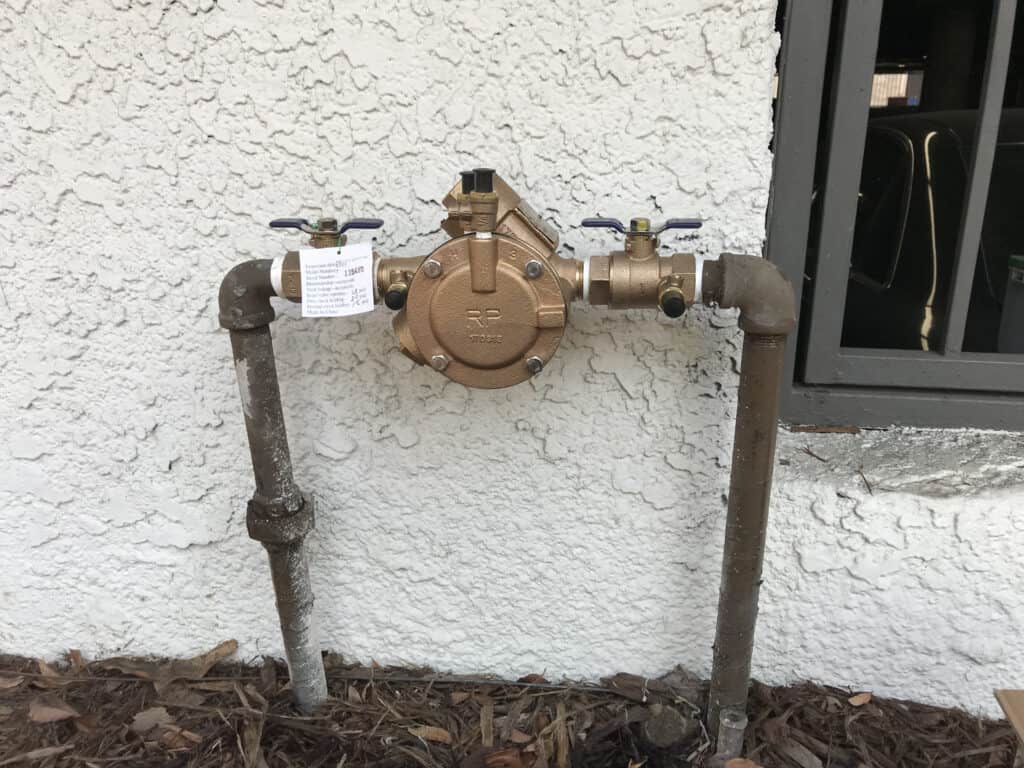When it comes to backflow preventers, there’s some wrong information circulating out there. I want to set the record straight. Read on to learn what backflow preventers are and why they’re necessary for keeping your drinking water safe.
Our landscapes have all kinds of things that can make us sick if they get into our drinking glass. You can find pollutants like fertilizers, pesticides, and animal waste in your irrigation water. Because of this, irrigation water is considered a contaminant. Since irrigation systems are almost always connected to your home or building’s water source in some way or another, it is important to have a backflow preventer. Your irrigation valves are not always enough to stop backflow alone and prevent the poisoning of your water.
A backflow preventer is a device that allows water to go through it in one direction but prevents it from going backwards in the opposite direction. Without the proper backflow preventers, landscape pollutants can return through your irrigation pipe and up into your home or building’s water source.
Types of Backflow Preventers
There are several things to consider when determining the type of backflow preventer that is right for you. Plan to have a professional install and test your system and be prepared to answer the following questions to help determine the right one for you.
Is it a commercial or residential property?
Do you plan to install a fertilizing system?
Where would you like the preventer to be installed?
Is the area being irrigated large or small?
There are various types of backflow preventers available. They include:
An Atmospheric Vacuum Breaker. This is one of the least expensive preventers and is usually installed after all your control valves. If you have a large landscape, this may not be practical.
An Anti-Syphon Valve. This is a manual or automatic control valve with a built-in atmospheric vacuum breaker. It needs to be installed at a certain height, compared to its sprinklers or dripper. This is the most common preventer for single-family residential homes.
A Pressure Vacuum Breaker. This is like an atmospheric vacuum breaker however, you only need to install one. It must be installed on the mainline supply before any of your control valves.
A Reduced Pressure Type Backflow Preventer. This is considered the standard for commercial irrigation systems and is also the most expensive of the preventers.
It’s important to note that once your preventers have been installed, they need to be checked at least once a year to make sure they are functioning correctly. If you live in an area with extreme cold, make sure you protect your system from freezing.
In summary, it is important to protect your water and make sure you have the appropriate backflow preventer system in place. Plan to hire a professional to help. When installed correctly, backflow preventers can help prevent serious harm. Lastly, depending on usage, it is recommended to rebuild or replace your preventers every five years.
Not sure where to start? Contact us. One of Groundcare Landscape’s irrigation specialists will be happy to help!






